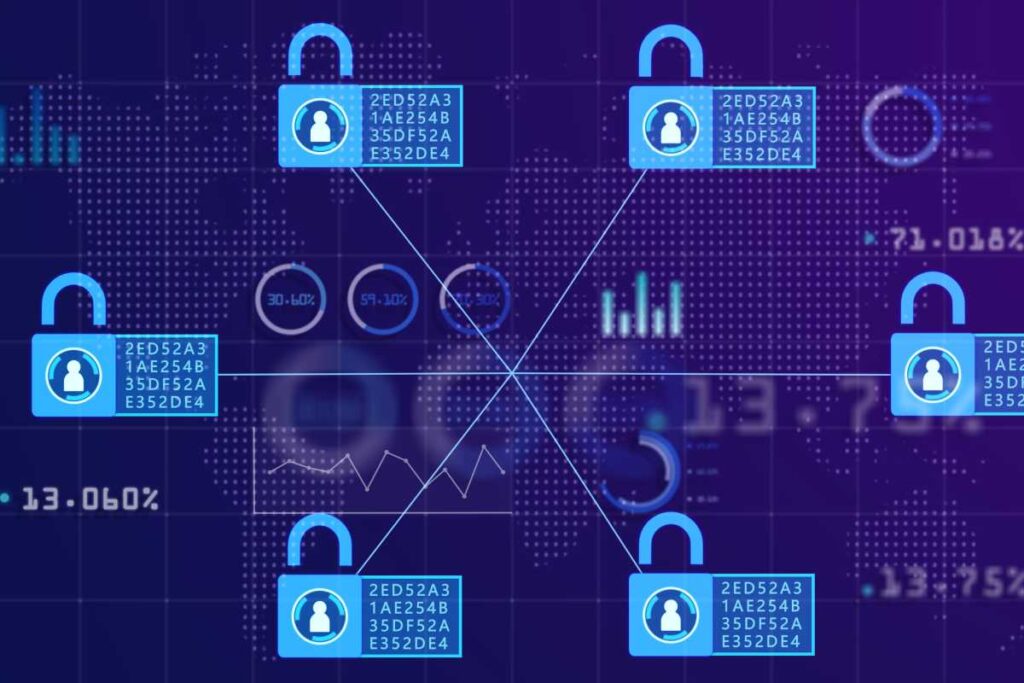In the last decade, few technologies have generated as much excitement, skepticism, and transformation as blockchain. Originally introduced as the backbone of Bitcoin in 2009, blockchain has since grown far beyond its cryptocurrency roots. It now underpins a wide variety of applications in finance, healthcare, supply chains, art, entertainment, and even government services.
If you’re new to blockchain, the terminology and hype can feel overwhelming. But at its core, blockchain is a simple, elegant idea with the potential to reshape how we trust, transact, and share information in the digital age.
This guide will break down what blockchains is, why it matters, and how it’s evolving in 2025, giving you a beginner-friendly yet comprehensive overview.
What Is Blockchain?
At its simplest, a blockchain is a digital ledger of transactions that is:
- Decentralized: No single authority controls it.
- Immutable: Once data is recorded, it cannot be altered.
- Transparent: Every participant can verify transactions.
Think of it as a shared Google spreadsheet that’s open to everyone, constantly updated, and verified by many people instead of one central administrator.
Key Features of Blockchain
- Blocks and Chains: Data is stored in “blocks.” Each block contains a group of transactions and is linked to the previous block, forming a chain.
- Consensus Mechanisms: Instead of one authority validating data, blockchain uses algorithms like Proof of Work (PoW) or Proof of Stake (PoS) to ensure everyone agrees on the truth.
- Security Through Cryptography: Advanced encryption ensures that only authorized parties can access or add data.
Why Does Blockchain Matter?

Blockchain is often described as a “trust machine” because it eliminates the need for intermediaries. Instead of relying on banks, brokers, or government entities, blockchain allows strangers to interact securely and transparently.
Here are the major reasons why blockchain matters today:
1. Trust Without Intermediaries
Traditionally, we depend on third parties, like banks, auditors, or notaries, to ensure trust in financial or legal transactions. Blockchain allows peer-to-peer trust, reducing costs and inefficiencies.
2. Security and Transparency
Transactions on blockchain are nearly tamper-proof. Once a block is added, it cannot be modified without altering the entire chain, a near-impossible task on large networks.
3. Financial Inclusion
Blockchain enables access to financial services for the unbanked population worldwide, simply through a smartphone and an internet connection.
4. Global Transactions
Cross-border payments that once took days and hefty fees can now be executed in minutes at lower costs.
5. New Business Models
From decentralized finance (DeFi) to NFTs (non-fungible tokens), blockchain creates new ways to exchange value, monetize creativity, and design business ecosystems.
Core Applications of Blockchain
While blockchain began with cryptocurrency, its applications now extend far beyond digital money.
1. Finance and Banking
- Cryptocurrencies (Bitcoin, Ethereum): The most popular blockchain use case.
- DeFi (Decentralized Finance): Peer-to-peer lending, borrowing, and investing without traditional banks.
- Stablecoins: Digital currencies pegged to fiat money (like USD) to reduce volatility.
- Cross-border Payments: Companies like Ripple enable faster, cheaper international transfers.
2. Supply Chain Management
Blockchain improves traceability. From verifying whether diamonds are conflict-free to ensuring food safety, blockchain allows every step to be tracked. Companies like Walmart and Maersk use blockchain to enhance supply chain transparency.
3. Healthcare
Patient records can be stored securely on blockchain, ensuring privacy while enabling interoperability between hospitals and clinics. It can also help track drug authenticity and prevent counterfeits.
4. Government and Public Services
- Voting Systems: Blockchain can make elections more secure and transparent.
- Land Registries: Countries like Georgia and Sweden use blockchain for tamper-proof property ownership records.
- Identity Management: Citizens can control their digital identities without relying on centralized databases.
5. Art, Entertainment, and NFTs
NFTs have given artists new ways to monetize digital creations. A blockchain record verifies ownership and authenticity, preventing duplication or piracy.
6. Energy and Sustainability
Blockchain enables peer-to-peer energy trading (e.g., selling excess solar power directly to neighbors) and helps track carbon credits for sustainability initiatives.
Blockchain Basics Every Beginner Should Know
To understand blockchain, you’ll need a grasp of a few key concepts:
- Public vs. Private Blockchains
- Public blockchains (Bitcoin, Ethereum) are open and decentralized.
- Private blockchains (Hyperledger, Quorum) are restricted and used by enterprises.
- Smart Contracts
These are self-executing contracts coded on the blockchain. Once conditions are met, the contract executes automatically, no lawyers or intermediaries needed. - Tokens and Coins
- Coins are native digital currencies (e.g., BTC, ETH).
- Tokens are created on existing blockchains (e.g., stablecoins, NFTs).
- Consensus Mechanisms
- Proof of Work (PoW): Used by Bitcoin; requires solving complex puzzles, but is energy-intensive.
- Proof of Stake (PoS): Used by Ethereum 2.0; validators stake coins to secure the network, making it more eco-friendly.
The Evolution of Blockchain: Past, Present, and Future

Blockchain has gone through several phases of development:
Phase 1: Bitcoin and Digital Money (2009–2013)
The invention of Bitcoin introduced blockchain to the world as a decentralized peer-to-peer payment system.
Phase 2: Ethereum and Smart Contracts (2014–2017)
Ethereum expanded blockchain’s use cases with programmable smart contracts, enabling decentralized applications (dApps).
Phase 3: ICOs and the First Wave of Hype (2017–2018)
Initial Coin Offerings (ICOs) became a popular way to raise funds, but many turned out to be scams, sparking regulation.
Phase 4: DeFi, NFTs, and Enterprise Adoption (2019–2022)
DeFi protocols allowed people to borrow, lend, and earn yields without banks. NFTs revolutionized digital ownership, while companies began exploring blockchain use cases.
Phase 5: Web3 and Global Integration (2023–Present)
By 2025, blockchain will be part of the Web3 movement, where users control their data and digital identities. Tokenization of assets, real estate, stocks, and even music rights is gaining traction.
What’s Next? (2025 and Beyond)
- Interoperability: Blockchains will talk to each other seamlessly.
- Regulation and Clarity: Governments are building frameworks for safer adoption.
- AI + Blockchain Integration: Smarter, predictive, and more secure systems.
- Sustainability: Eco-friendly consensus mechanisms will dominate.
Challenges Facing Blockchain
Despite its potential, blockchain is not without hurdles:
- Scalability: Many blockchains struggle with processing large transaction volumes.
- Energy Consumption: PoW systems like Bitcoin raise environmental concerns.
- Regulation: Governments are still defining rules, creating uncertainty.
- User Experience: Blockchain apps can be complex for beginners.
- Security Risks: While blockchain is secure, smart contracts and exchanges can be hacked.
Why Beginners Should Pay Attention in 2025
You don’t have to be a tech expert to see why blockchain matters. As industries adopt blockchain, everyday interactions, from how we pay, vote, or prove ownership, will involve this technology. For beginners, 2025 is the perfect time to learn because:
- The industry is more regulated and mature than in its early days.
- Educational resources are abundant.
- The focus is shifting from speculation to real-world utility.
Practical Steps for Beginners to Get Started

- Learn Before You Invest: Read beginner-friendly guides, take online courses, and follow reliable news sources.
- Experiment with Small Transactions: Try sending a small amount of Bitcoin or minting an NFT to understand how it works.
- Explore Use Cases: Look into how blockchain applies to your field, be it business, healthcare, or art.
- Stay Updated: Blockchain evolves quickly. Stay curious and adaptable.
Conclusion: Blockchain’s Role in Shaping the Future
Blockchain is more than a buzzword; it’s a technological shift toward trust, decentralization, and empowerment. From democratizing finance to revolutionizing supply chains, it has already shown transformative potential.
For beginners, the blockchain journey can seem complex, but understanding its basics reveals why it’s one of the most important technologies of our time. As it continues to evolve in 2025 and beyond, those who embrace and learn it today will be better prepared to navigate and even shape the digital future.
